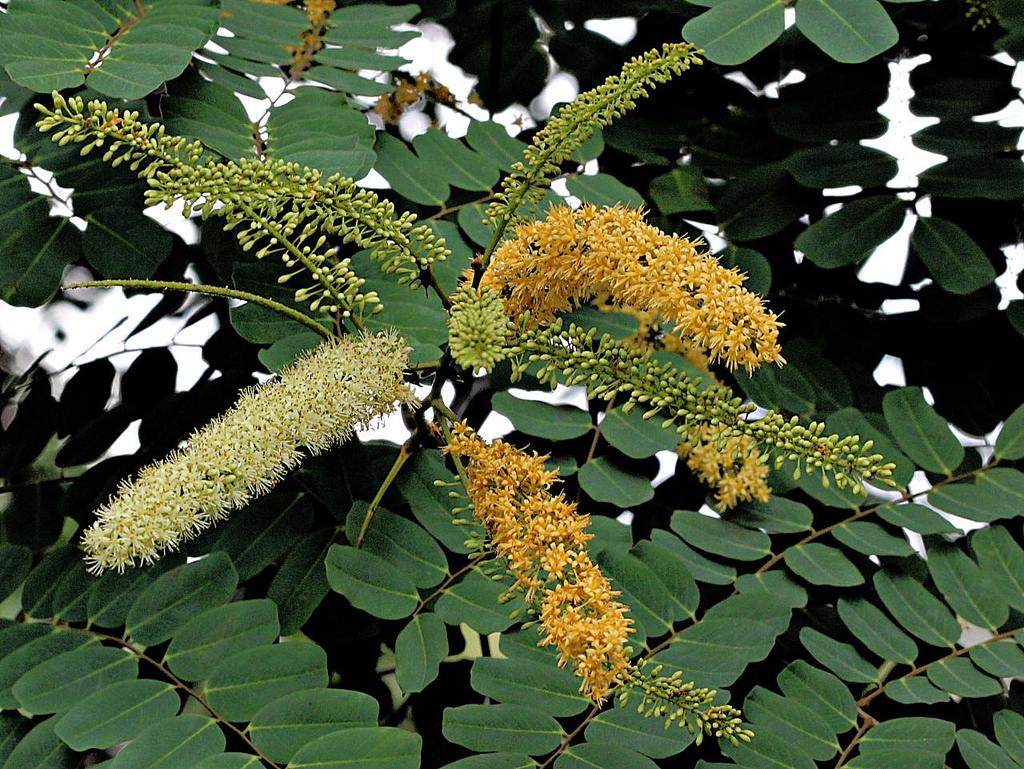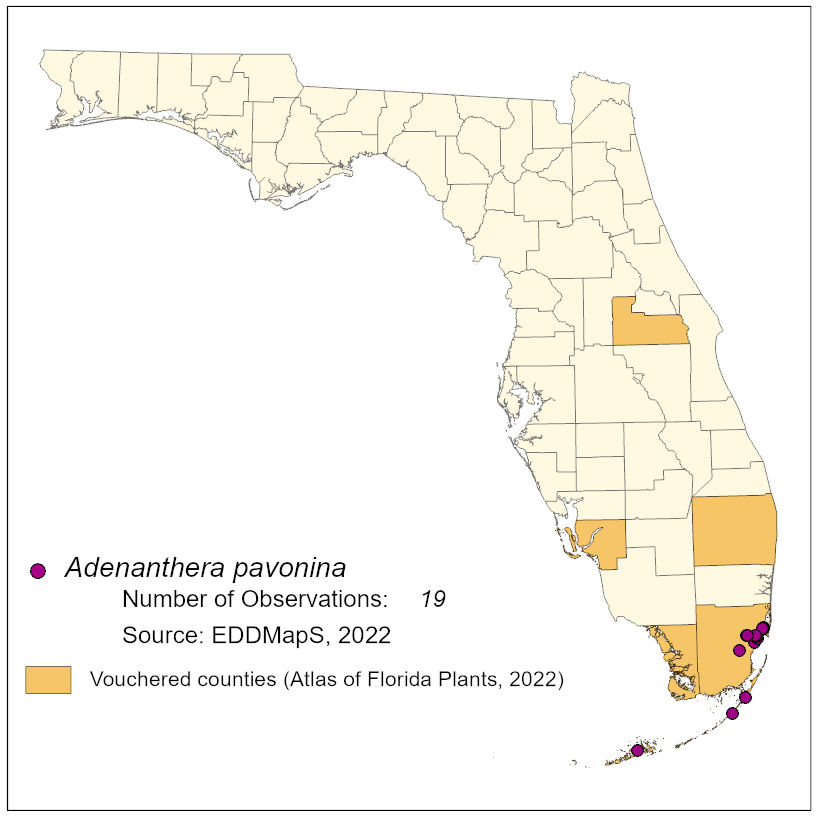Common Name: red sandalwood
Family: Fabaceae
Common Synonyms: none
USDA Hardiness Zone: 10B - 11
Growth Habit: Tree
Origin: Tropical Asia, S. China, India, N. Australia, and Soloman Islands
FISC Category: 2
FDACS Listed Noxious Weed: No
Introduction Date: pre-1930
IFAS Assessment:

Deciduous tree to 20 m tall with a buttressed trunk and flaky bark. Alternate, stalked, leaves, twice compound to 40 cm long, glabrous to glaucous beneath, dark green above. Small pale yellow to orange flowers (not pea-shaped) on elongated stalks arising from leaf axils, fragrant. Fruit a long narrow pod, maturing black and twisted with shiny red seeds.
Prairie hammock, rockland hammock, disturbed sites
Potential problem species in tropical areas, possible EDRR candidate if not well established. Seeds persist in soil for up to 5 years. Seeds dispersed by birds.

NA
Dave's Garden. 2013. PlantFiles: Red sandalwood, Coral tree, Adenanthera pavonina. http://davesgarden.com/guides/pf/go/51496/. Accessed on December 2, 2013.
Langeland, K.A., H.M. Cherry, C.M. McCormick, K.C. Burks. 2008. Identification and Biology of Non-Native Plants in Florida's Natural Areas-Second Edition. IFAS Publication SP 257. University of Florida, Gainesville, Florida.